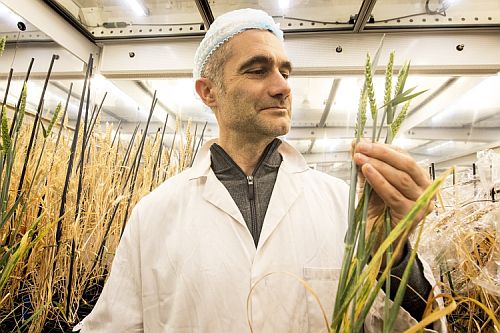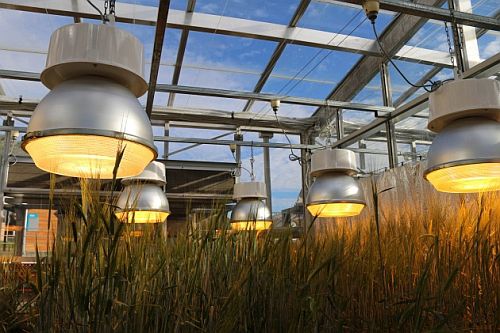Wheat grows twice as fast under LEDs
A team of scientists has cut the growing time of wheat by 50% by using LED lighting.
Researchers from Australia and the UK grew wheat from seed to maturity in just eight weeks instead of the standard 16-week growing time for the cereal grown in spring.
The “speed-breeding” regime developed by teams at the John Innes Centre in Norwich, UK, in conjunction with the universities of Queensland and Sydney, uses a glasshouse with LEDs tuned to aid photosynthesis in wheat and illuminated for up to 22 hours a day.
The development means that, for the first time, it is possible to grow as many as six generations of wheat every year, a threefold increase on the shuttle-breeding techniques currently used by breeders and researchers. The success of the project is being compared to the post-World War Two shuttle-breeding innovations in cereal production.
“Globally, we face a huge challenge in breeding higher yielding and more resilient crops,” the leader of the team, Dr. Brande Wulff of the John Innes Centre, told Lux. “Being able to cycle through more generations in less time, will allow us to more rapidly create and test genetic combinations and find the best combinations for different environments.”

“I’d like to think that in 10 years from now, you could walk into a field and point to plants whose attributes and traits were developed using this technology,” says Dr. Brande Wulff of the John Innes Centre, pictured, of the LED lighting regime that has dramatically boosted wheat growing times.
Despite a rapidly growing world population and the impact of climate change, the improvement rates of several staple crops have stalled in recent years.Speed breeding, says Dr. Wulff, offers a potential new solution to a global challenge for the 21st century.
“People said you may be able to cycle plants fast, but they will look tiny and insignificant, and only set a few seed. In fact, the new technology creates plants that look better and are healthier than those using standard conditions. One colleague could not believe it when he first saw the results.

The international team also says it has proof that the speed-breeding technique can be used for a range of important crops. They have achieved up to six generations per year for bread wheat, durum wheat, barley, pea, and chickpea; and four generations for canola, a form of rapeseed. This is a significant increase compared with widely-used commercial breeding techniques.
A control experiment using high-pressure sodium (HPS) lights at the University of Queensland, Australia. The scientists say the sodium-vapor lamps are ineffective because they generate much heat and emit poor quality light compared to LEDs. (Photo credit: University of Queensland.)Speed breeding, when employed alongside conventional field-based techniques, can be an important tool to enable advances in understanding the genetics of crops, say the scientists.
“Speed breeding as a platform can be combined with lots of other technologies such as gene editing to get to the end result faster,” explains Dr. Lee Hickey from the University of Queensland.
The study shows that traits such as plant pathogen interactions, plant shape and structure, and flowering time can be studied in detail and repeated using the technology.
The speed breeding technology has been welcomed by wheat breeders who have become early adopters.
The John Innes Centre in Norwich, UK is an international center for plant science, research, genetics, and microbiology.
Ruth Bryant, a wheat disease expert at UK seed supplier RAGT, said, “Breeders are always looking for ways to speed up the process of getting a variety to market, so we’re really interested in the concept of speed breeding.” The company is working closely with Dr. Wulff’s group at the John Innes Centre to be the first to develop the method in a commercial setting.Dr. Allan Rattey, a wheat crop breeder with Australian company Dow AgroSciences, has used the technology to breed wheat with tolerance to pre-harvest sprouting, a major problem in Australia.
“Environmental control for effective screening and the long time taken to cycle through several cycles of recurrent selection were major bottlenecks. The speed breeding and targeted selection platform have driven major gains for both of these areas of concerns.”
HIPPO LED Sourced by Kevin Goudeau
